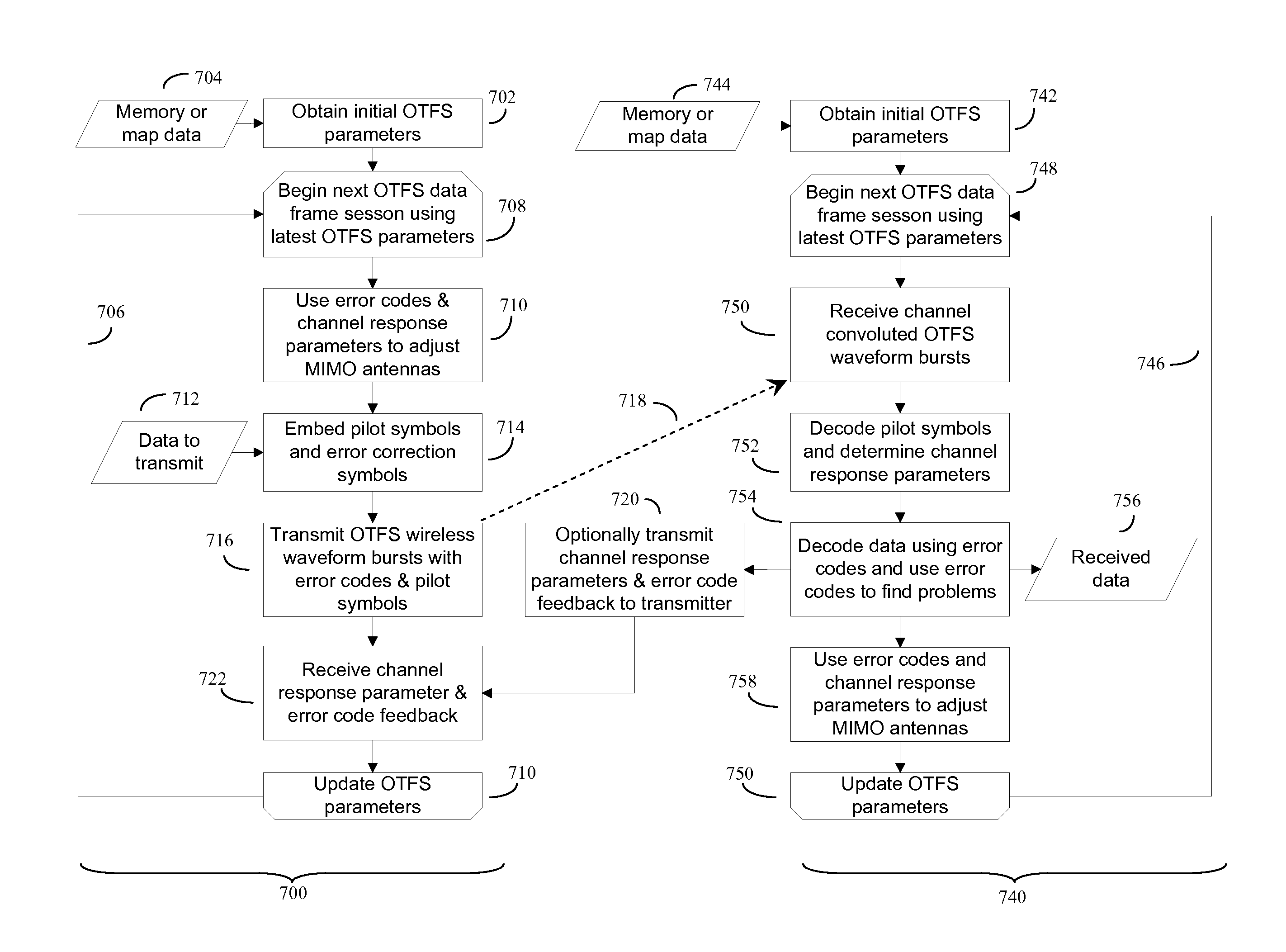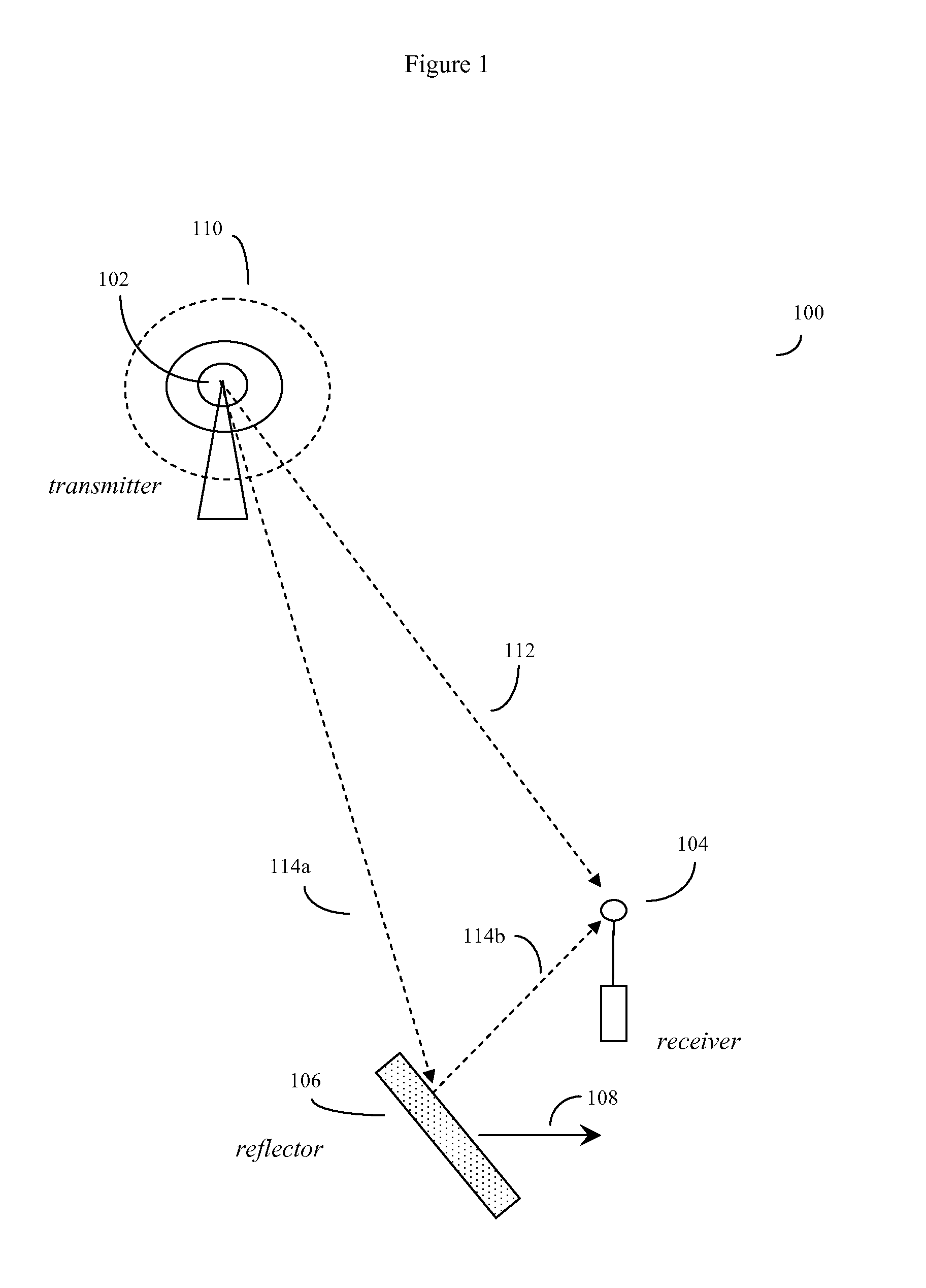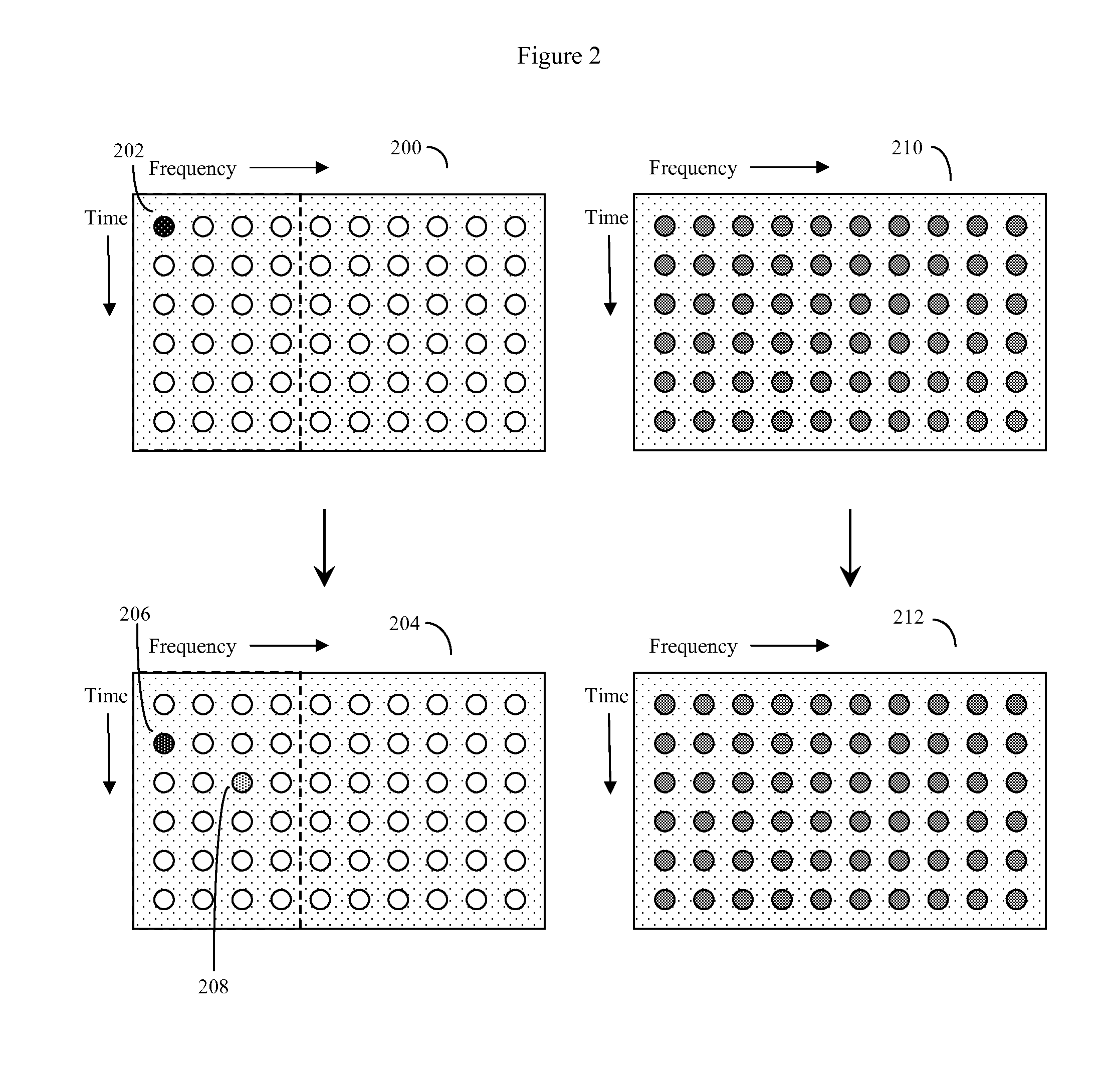Methods of operating and implementing wireless otfs communciations systems
a wireless communication and wireless technology, applied in the field of wireless telecommunications, can solve the problems of inherently non-deterministic, essentially impossible to solve, and the signal to and from the cell phone and the cell phone base station can be subject to apparently unpredictable amounts of distortion and interference, and achieve the effect of improving the overall performance, facilitating communication, and facilitating communication
- Summary
- Abstract
- Description
- Claims
- Application Information
AI Technical Summary
Benefits of technology
Problems solved by technology
Method used
Image
Examples
Embodiment Construction
[0037]As previously discussed, the invention is based in part on the insight that in contrast to prior art methods that tended to view variations in signal strength (e.g. occasional signal fading, how long a signal remains coherent, how large a range of signal frequency ranges can be expected to be coherent) as something that can only be handled by statistical methods, superior results can be obtained if the underlying structure of a communications channel is exposed, and the various causes of signal distortion (e.g. various reflections, frequency shifts, other shifts and the like) are instead sorted out or “solved for”.
[0038]Since communication channels are used to transmit data, throughout this disclosure, generally communication channels will referred to as “data channels”. The main focus of this disclosure will be on wireless data channels that transmit data (often using radio signals of various frequencies up into the microwave frequencies and beyond) though three dimensions of...
PUM
 Login to View More
Login to View More Abstract
Description
Claims
Application Information
 Login to View More
Login to View More - R&D
- Intellectual Property
- Life Sciences
- Materials
- Tech Scout
- Unparalleled Data Quality
- Higher Quality Content
- 60% Fewer Hallucinations
Browse by: Latest US Patents, China's latest patents, Technical Efficacy Thesaurus, Application Domain, Technology Topic, Popular Technical Reports.
© 2025 PatSnap. All rights reserved.Legal|Privacy policy|Modern Slavery Act Transparency Statement|Sitemap|About US| Contact US: help@patsnap.com



